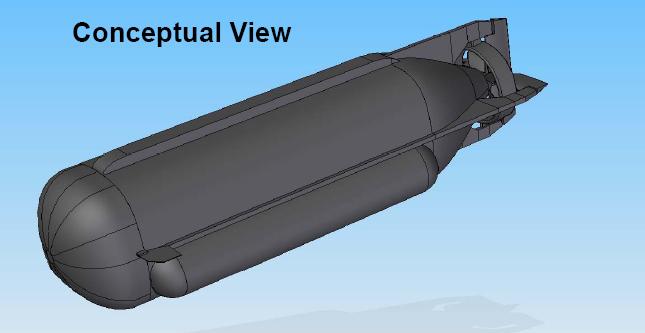This article is more than 1 year old
New Navy SEAL minisub's IT-system specs released
US frogmen to get inertial nav, 'plug & play' periscope
Plug-n-play periscope, automatic docking, sonar detectors: It's not your father's mini-sub
The SDVs were to have been replaced by the ASDS, which would have mated directly to the mother sub without need for an attached docking bay. But in the event the ASDS, despite massive delays and cost overruns, always tended to get badly damaged if the carrying sub went at all fast. It was severely criticised by US government auditors even before it caught fire, and the programme now appears to be quite literally dead in the water.
Thus SOCOM have decided on a less ambitious replacement craft which they call Shallow Water Combat Submersible (SWCS), essentially a modernised SDV. The SWCS has been discussed now and again for several years now.

And here's the new version. Now with open-architecture data handling.
So far, so what. But now, in a request for information issued last month, SOCOM have said they'd like to hear from someone who can make them an "Integrated Bridge System" for their new mini-sub (that's essentially a new comms/sensors/IT chassis, not a folding gangplank or something):
The SWCS will require development of an IBS with an open architecture, a power and signal distribution system capable of integrating various electronic systems and sensors, and the capability to display operational data to the vehicle pilot and navigator.The IBS must address ... the growing ability of hostile nations to detect, identify and target [special-ops frogmen] conducting undersea tasks. Thus, the SWCS shall have a modular subsystem design conducive to accommodating upgrades to processors and sensors. Operating in a free-flooding "wet" vehicle, the SWCS passengers and crew transit for extended durations (up to 12 hours) in a wet, variant temperature environment while breathing from SCUBA gear. Thus hardware and software selected must feature interfaces that ensure required operator actions are simple and minimized.
The SOCOM planners give a list of things they want the new frogman-carrier's data handling system to do, giving some interesting insights. They'd like the minisub pilot to know if he was being scanned by hostile sonar, for instance, or (if on the surface) by radar: the IBS should offer the option of plugging in "passive sonar, and ESM [Electronic Support Measures - radar detectors, to you and me]."
The current SDVs navigate underwater using seabed-scanning doppler sonar, as satnav signals can't be used when submerged. Unfortunately, a sophisticated enemy can use the sonic pulses emitted by the Mark 8's nav sonar to detect it. SOCOM would prefer the future SWCS to feature inertial navigation.
Apart from this, the new mini-sub should if possible feature wireless through-water comms of the sort now used by civilian divers, and must have a soundless, secure option using wires too. The ability to download mission data wirelessly when docked aboard the mother ship is desirable, but a hardwired umbilical mode is also fine.
It would also be nice if the SWCS' on-board computers and controls were clever enough to bring it in for automated docking without help from divers. This would put slightly less strain on accommodation aboard the mother sub. There are some specially-converted former ICBM vessels specially intended to carry a force of SEALs, but where the dry deck module is fitted to an ordinary attack boat the SEALs and docking-bay divers have to "hot bunk" - take turns sleeping - with the submarine crew.
Finally, the info request reveals that the SWCS will feature an extend-able "sensor mast ... allowing the Plug-n-Play integration of various imaging sensors" (periscopes are so last century) and the IBS data system should obviously allow for recording these images and displaying them to the minisub's crew.
All the cunning minisub electronics needs to work at depths of at least 190 feet, ideally as much as 300 feet, and it should be 95 per cent reliable over 15 twelve-hour missions.
Full details here, for anyone interested. British readers may care to note that Her Majesty's equivalent of the US Navy SEALs - the Special Boat Service (SBS, the maritime SAS) - also currently use the Mark 8 Mod 1 SDV and will probably follow the SEALs onto SWCS in due course. ®
